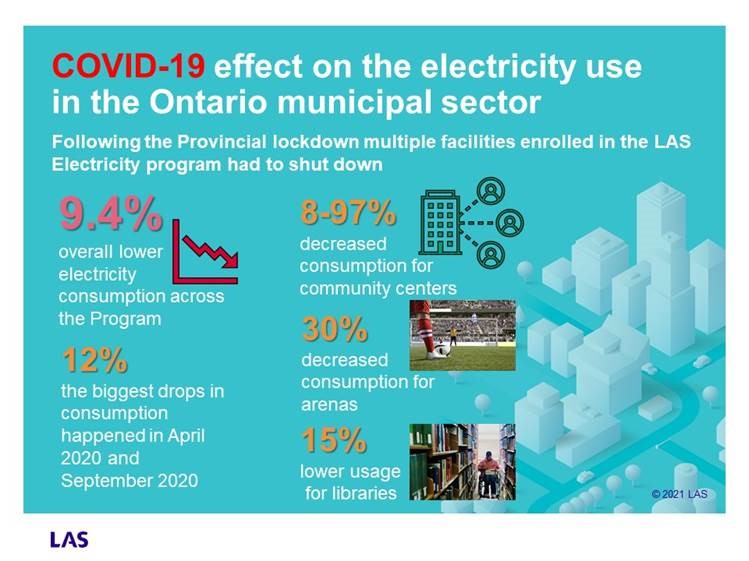COVID-19 Effects on the Ontario Electricity Market
It has been a year since the Government of Ontario declared a state of emergency for the first time due to COVID-19. It has turned the life of Ontarians upside down. COVID-19 is now a part of every conversation. Three provincial lock downs in and 12 months of trying to balance work-from-home (if we are lucky) and personal life we are starting to see COVID-19 effects on various sectors.
How did COVID-19 affect the electricity market in Ontario over the past year?
COVID-19 added uncertainty to the Ontario electricity sector from forecasting supply, demand and disruption of reliable operation of the grid to prices and rates.
Uncertain demand patterns and limitations in the workforce as well as delayed maintenance projects and delayed transmission development created a challenge for the reliable operation of the electricity grid in Ontario.
Back in April 2020 the Independent Electricity System (“IESO”) published an infographic describing the change in the electricity consumption patterns. After the state of emergency was declared in March 2020 the provincial grid experienced a 10-12% decrease in consumption (equivalent to half of Toronto’s electricity consumption). It has now been climbing back up with businesses reopening and operating with a limited capacity. According to IESO, with warmer days around the corner and some Ontarians still working from home we could see a repetition of last year’s 7% average increase in residential electricity consumption caused by the use of air conditioning.
Due to IESO’s emergency preparedness and successful implementation of the pandemic plans there has not been a visible COVID-19 effect on the spot market price.
Last month LAS compared municipal consumption from March to December 2020 to the very same period in 2019. Here is what we found:

- The overall consumption across municipal accounts dropped by 9.4%.
- The biggest drops in usage happened in April 2020 and September 2020 when the consumption decreased by 12% both months.
- Community centers and pools experienced the highest decrease anywhere from 8% to 97%.
- Electricity usage for arenas decreased on average by 30%.
- Libraries are consuming 15% less energy.
- 50% of accounts enrolled in the LAS Electricity Program experienced a drop in consumption due to COVID-19.
Another factor currently affecting the electricity sector is rates.
COVID-19 made Time-of-Use rates very unstable and hard to predict. The Province started off with implementation of the fixed Time-of-Use rate back in March 2020, jumping to a higher fixed rate in June 2020 and then returning to on-, mid- and off-peak pricing model with the highest ever rates (from October 2019 to November 2020 Time-of-Use prices went up 60%). On January 1st, 2021, in line with the second Provincial stay at home order, a fixed Time-of-Use rate was implemented again.
But when life gives you lemons, make lemonade! Effective January 2021 the Ontario government committed to funding a portion of non-hydro renewable contracts, as opposed to ratepayers through Global Adjustment charges. COVID-19 helped to facilitate this overdue change.
The first Estimate for the Global Adjustment for April 2021 is the lowest it has been since January 2015. The current Time-of-Use and Tiered rates were corrected to reflect this change. This is a 20% decrease from November 2020 Time-of-Use prices.
Into the third Province-wide lock down we still don’t know what will happen next with electricity prices. Time will show if there will be another period of fixed Time-of-Use pricing, but fingers crossed the next scheduled electricity rates review will show hope for stable pricing and lower rates.






